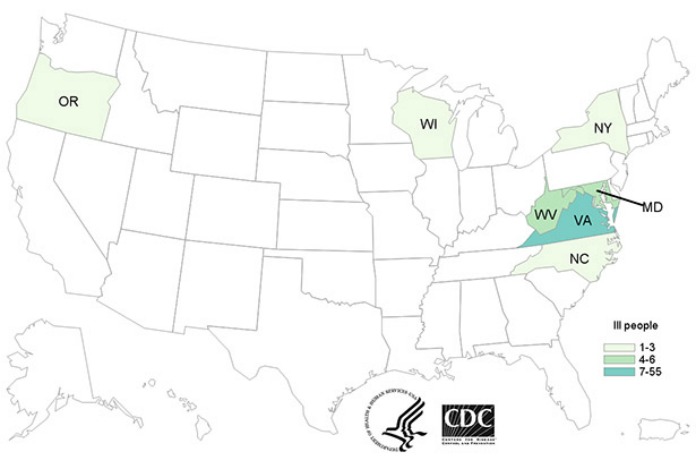 The Tropical Smoothie Cafe Hepatitis A outbreak has expanded to seven states. At least 70 people have been sickened and 32 of them have been hospitalized, which is a hospitalization rate that is more than double the average for this illness.
The Tropical Smoothie Cafe Hepatitis A outbreak has expanded to seven states. At least 70 people have been sickened and 32 of them have been hospitalized, which is a hospitalization rate that is more than double the average for this illness.
Frozen strawberries imported from Egypt have been identified as the likely source of this outbreak. Tropical Smoothie Cafe reported that the contaminated strawberries were removed from all locations by August 8 and that stores nationwide have all received frozen strawberries from a new supplier. At this time, no other restaurants or retailers have been identified as having received the tainted strawberries, according to the Centers for Disease Control and Prevention (CDC).
Federal health officials say that while the contaminated food source has been removed from the restaurants, case numbers are expected to rise because of the long incubation period and the possibility of secondary infections.
During interviews with health investigators, 68 of the 7o case patients reported drinking a Tropical Smoothie Cafe smoothie before they became ill. Most of them remembered strawberries as an ingredient in the smoothie they ordered. The most recent case was reported August 23, 2016.
Cases have been reported from the following states: Maryland (6), New York (1), North Carolina (1), Oregon (1), Virginia (55), West Virginia (5), and Wisconsin (1). Health officials urge anyone who visited a Tropical Smoothie Cafe in July or August and develops symptoms to see a doctor and mention exposure of Hepatitis A and to contact their local health department. Food handlers with the virus should stay home to prevent the spread of the virus, the CDC advises.
Hepatitis A is a contagious liver disease that is spread from person to person and through contaminated food and beverages. Infected people can be contagious for weeks before they start experiencing symptoms, and sometimes show no symptoms at all.
Symptoms of a Hepatitis A infection include: fever, fatigue, loss of appetite, nausea, vomiting, abdominal pain, joint pain, dark urine, clay-colored stools and yellow skin or eyes. Symptoms, which can last between three and eight weeks, usually start 28 days after exposure, but can appear anywhere from 15 to 50 days after exposure. Most people recover within a few weeks, but some can be sick as long as six months.




